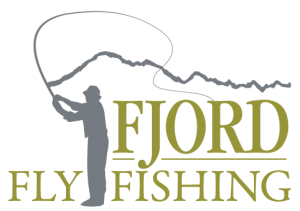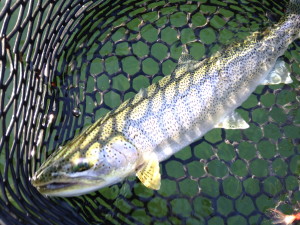Hood Canal Fly Fishing Report – April 2016
May is almost here and from now on out Sea-Run Cutthroat fishing on Hood Canal continue to improve. The  majority of Sea-Run Cutthroat have emerged from their natal streams and completed their spawning cycle, once again completing this cycle to bring on another generation of SRC.
majority of Sea-Run Cutthroat have emerged from their natal streams and completed their spawning cycle, once again completing this cycle to bring on another generation of SRC.
Recently, we have had some excellent Sea-Run Cutthroat Fishing on Hood Canal – once you find them. As is always the game with Sea-Run Cutthroat they can be very elusive at times. My recommendation is to keep moving locations until you find fish. SRC are migratory to a certain extent and may travel miles over a period of days. WDFW is currently doing some tagging studies and Hood Canal to learn more about where they travel and migration habits.
SRC won’t always be in the same spot at the same tide. They are hunters, always looking for the next meal. The chum fry migration is still occurring, so sometimes the cutthroat will be migrating out and following the chum fry since they are such a great meal!
Standard patterns will work to take SRC now including closures, small chum fry imitations, sculpins and really any baitfish imitation. We are booking trips now for single angler, two-angler full and half days. Check out fjordflyfishing.com or email chad@fjordflyfishing.com for more information.
Sea-Run Cutthroat Conservation:Sea-Run Cutthroat are andranamous – meaning that they spend most of their  life in the saltwater and then make their annual spawning run ranging anywhere from November through March to spawn. Once they emerge from their streams and adapt back into the saltwater they are more vulnerable to predators, and also must be handled with care from an anglers perspective. The law requires catch and release, single barbless hooks, and no bait in the saltwater waters of Washington. These three factors alone have helped to restore this once dwindling population of sea trout. Other helpful tips are to always use a rubber catch and release net, and keep the fish in the water while unhooking them with a pair of hemostats. If you do need to handle them for a picture or to unhook them, wet your hand first and then gently grab them, not squeezing hard as to damage internal organs. I know, we all like a glory shot including myself. However, the less we handle this delicate species the stronger their population will be and they will be there for future generations to enjoy.
life in the saltwater and then make their annual spawning run ranging anywhere from November through March to spawn. Once they emerge from their streams and adapt back into the saltwater they are more vulnerable to predators, and also must be handled with care from an anglers perspective. The law requires catch and release, single barbless hooks, and no bait in the saltwater waters of Washington. These three factors alone have helped to restore this once dwindling population of sea trout. Other helpful tips are to always use a rubber catch and release net, and keep the fish in the water while unhooking them with a pair of hemostats. If you do need to handle them for a picture or to unhook them, wet your hand first and then gently grab them, not squeezing hard as to damage internal organs. I know, we all like a glory shot including myself. However, the less we handle this delicate species the stronger their population will be and they will be there for future generations to enjoy.
